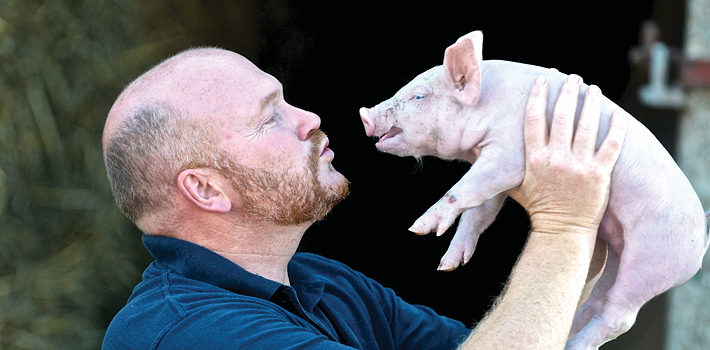Back in 2000, when I started my retail business through a government-funded scheme, you could get free marketing advice from mentors.
The chap who I had some time with was a retired marketing executive from Wrigley chewing gum, which is made in Plymouth. Its main brand now is Wrigley’s Extra. He told me the most important thing in food production, which overrides everything else and you don’t market until you get it right, is: ‘Does it taste any good?’
When he asked this, I replied, with just a little indignation: “Well, yes, of course it does – the pigs we use are all gilts at about 65kg deadweight, with a nice amount of cover.”
I am often reminded of that conversation, as I wait impatiently for my pigs to get to 90kg deadweight with a less than 14mm probe, which they need to be for me to be able to market the most profitable pig: making jam today – but how do we we ensure we make jam tomorrow?
As we all are acutely aware, the pig price we are receiving at the moment is not being driven by home consumption, but is due to fortunate economic circumstances, which mostly seem to act against us. However, every 20 years, all the ducks seem to line up for the pig industry. Think back to 1996, and the last time circumstances beyond our control resulted in a bit of luck with good prices. It would be a real missed opportunity if we do not look at pork eating quality now and make sure we get jam tomorrow.
Think back to 1996 and the last time circumstances beyond our control resulted in a bit of luck with good prices. It would be a real missed opportunity if we do not look at pork eating quality now
We all remember what happened to the industry three years after 1996.
But, bloody hell, where do we start? Tainted entire boars, too lean, too heavy, too quick through the abattoir, terminal sires selected for growth not taste, too much water in the bacon, gas flush packaging, poorly butchered…
We know it’s not too expensive to raise the eating quality of pork and at Kenniford Farm, we are doing something about it. We have swapped our terminal sire over to Duroc and intramuscular fat seems to be helpful in improving eating quality.
Last summer, we ran a trial on different terminal sires, producing similar results, but we decided to go with Duroc genetics from Hermitage in an effort to improve eating quality.
I appreciate JSR has worked on eating quality, but our proximity to Hermitage’s stud also contributed to my decision.
I’m going to roast a leg joint of a male low P2 Duroc-sired pig at the autumn NPA regional meeting, so we can taste the results!
PS, I must thank my pig team for taking the time to do the trial, at a very busy time for us on the farm.




